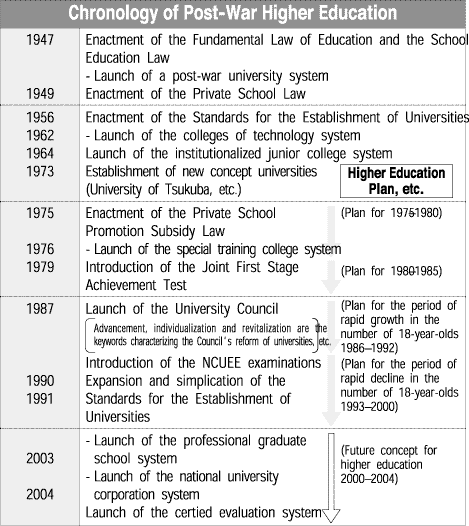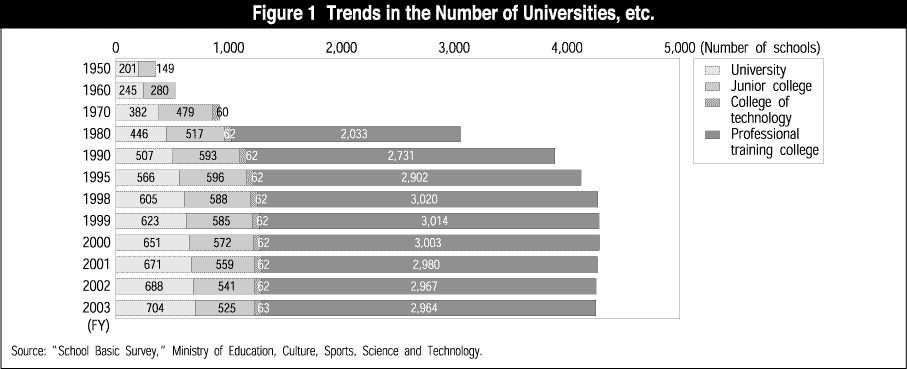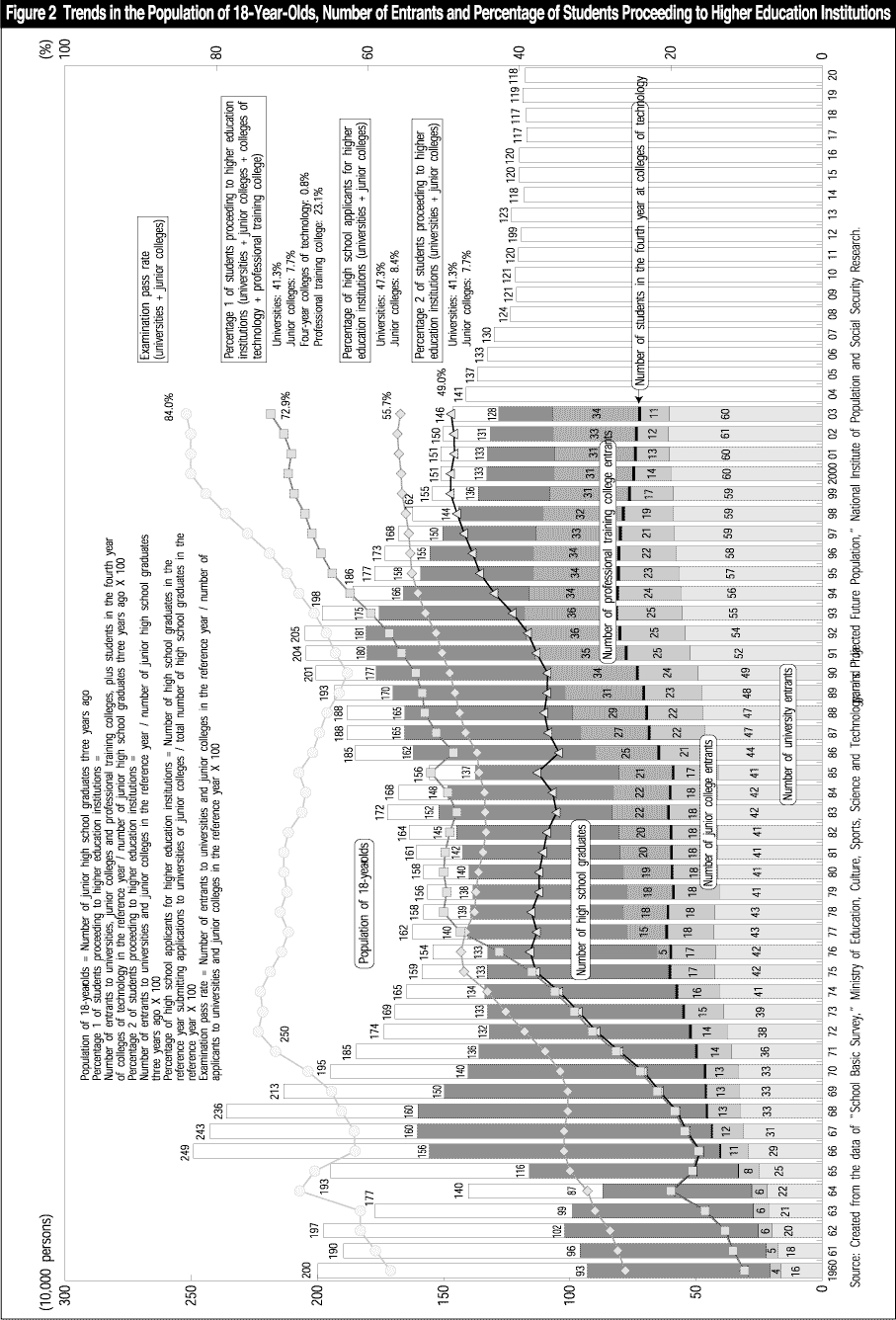| Home > Policy > White Paper, Notice, Announcement > White Paper > FY2003 White Paper on Education, Culture, Sports, Science and Technology >Part1 Introduction1 (1) | ||
Japan's higher education system in the modern era was introduced under the strong influence of the German university model, which was at the center of 19th century academia, and tailored to meet Japan's specific requirements. Through education reforms after World War II, Japan's pre-war system of higher education institutions adopted the US-style university system. Nevertheless, characteristics of the pre-war system continued in the post-war era, including a fixed hierarchical structure that gave the highest status to the former Imperial universities and an internal configuration that focused on an academic structure characterized by a course system and graduate schools as dependent parts of undergraduate faculties. In addition, a revision of the post-war reforms was undertaken from 1955 to 1965, including the shift to a multi-track system through the institutionalization of a system for junior colleges and the establishment of a system for colleges of technology.

The percentage of students proceeding to universities exceeded 15 percent in 1963, and with the exception of one short period, this figure continued to rise rapidly. Even with the period to 1975 of university demonstrations, the percentage of graduates entering university rose to 40 percent. Since then, the percentage of students proceeding to university has remained at the higher end of the 30 to 40 percent range. In the period from 1975 to 1985, Japan formulated its Higher Education Plan and advanced other measures that focused on quality and improvements to the system, including the promotion of private schools and establishment of new concept national universities ( Figures 1 and 2 ).


| Back To Top | MEXT HOME |